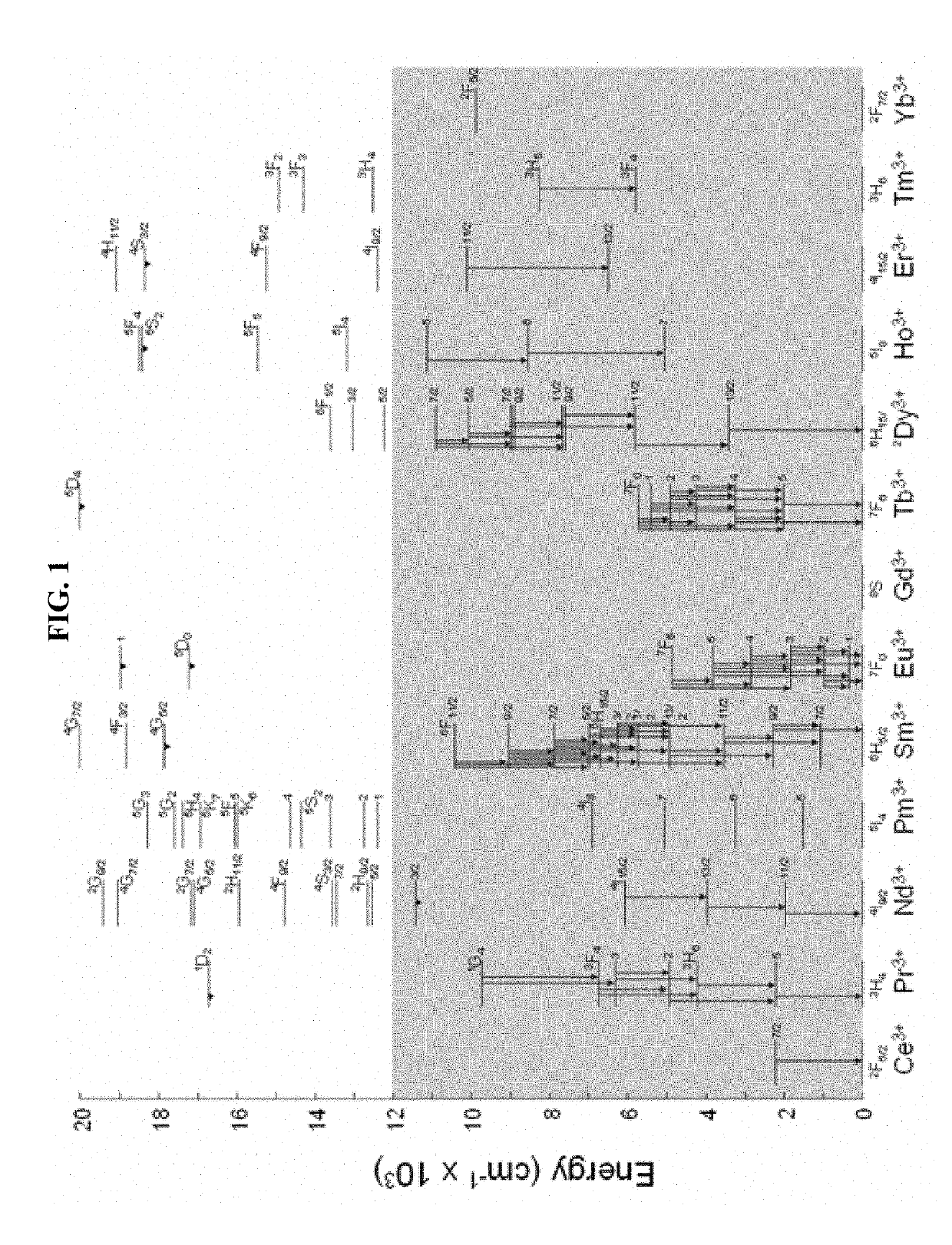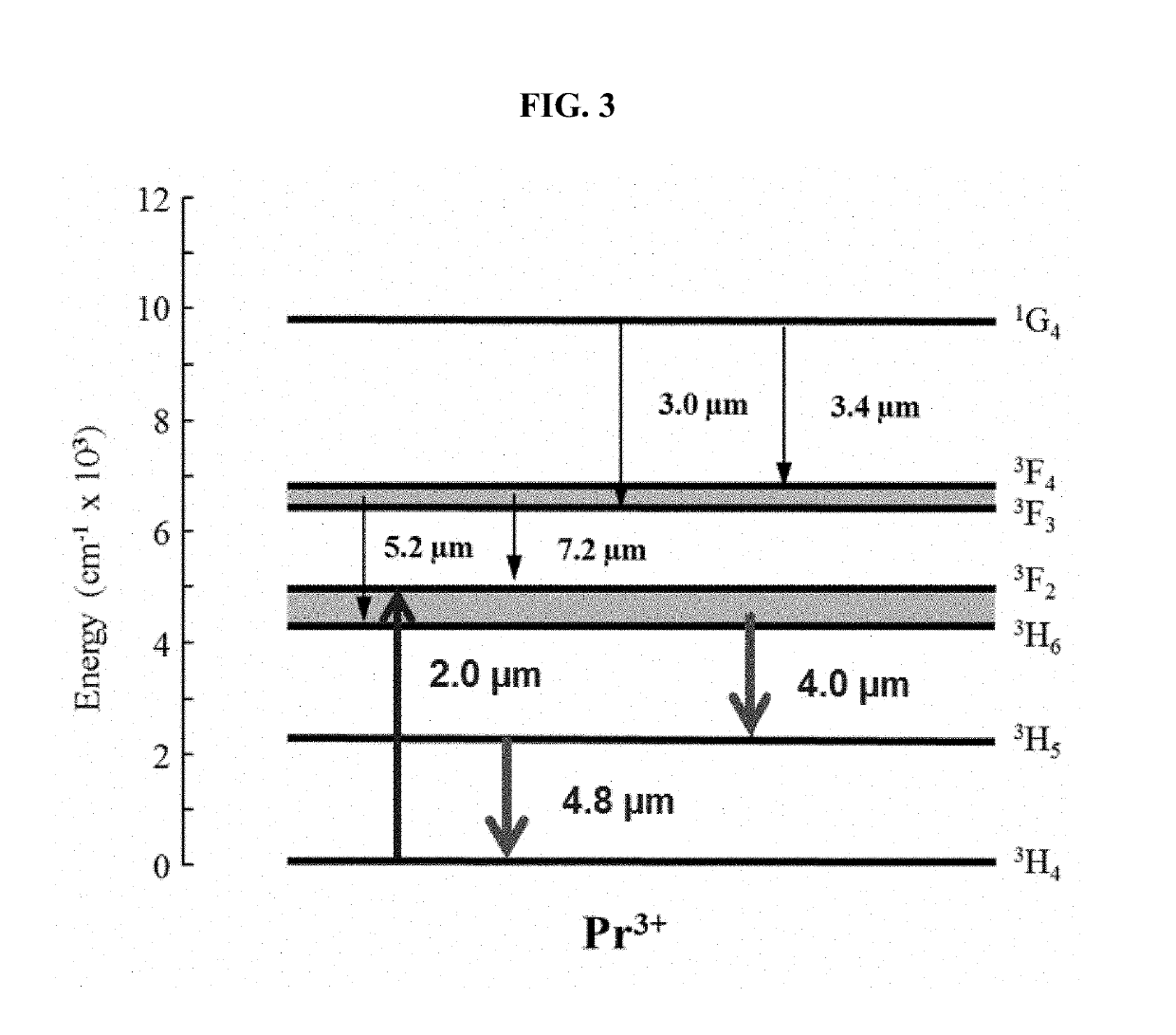Rare-earth-doped ternary sulfides for mid-wave and long-wave IR lasers
- Summary
- Abstract
- Description
- Claims
- Application Information
AI Technical Summary
Benefits of technology
Problems solved by technology
Method used
Image
Examples
example 1
on of Pr3+: CaLa2S4
[0038]Polycrystalline Pr3+ doped CaLa2S4 was produced by a ceramic process, whereby highly purified precursors were dissolved into solution, and then precipitated, dried, and then sulfurized under flowing H2S gas similar to the process described in J. Corvino, et al., “Development of Calcium Lanthanum Sulfide as an 8-12 μm Transmitting Ceramic,”Proc. SPIE, Vol. 505 Advances in Optical Materials, pages 42-46 (1984). The sulfurized powders were then sintered or hot pressed and hot isostatically pressed (HIP) to fabricate the Pr3+:CaLa2S4 samples.
[0039]This example demonstrates that rare-earth ions can be doped into the lanthanide site of the crystalline matrix. CaLa2S4 also exhibits a low phonon energy of 285 cm−1, which is beneficial for applications involving low multiphonon quenching of the mid-IR rare-earth transitions.
[0040]An overview of the process is shown in FIG. 2A. An image of a sample produced using the process is shown in FIG. 2B.
example 2
opy of Pr′: CaLa2S4
[0041]Pr3+ was chosen as the dopant for study. Pr3+ has been studied extensively in other host materials such as halide hosts (L. B. Shaw, et al., “Radiative and Multiphoton Relaxation of the Mid-IR Transitions of Pr3+ in LaCl3,” IEEE J. Quantum Electron., 32(12):2166-2172 (1996)), and chalcogenide glasses (L. B. Shaw, et al., “Mid-Wave IR and Long-Wave IR Laser Potential of Rare-Earth Doped Chalcogenide Glass Fiber,”IEEE J. Quantum Electron., 48(9):1127-1137 (2001)). Pr3+ possesses three lower lying energy levels, 3H5, 3H6, and 3F2, with transitions in the 3-5 μm spectral region that can be easily pumped by 2 μm fiber or diode lasers. The energy level diagram of Pr3+ is shown in FIG. 3.
[0042]Transparent samples of Pr3′:CaLa2S4 were spectroscopically characterized. The samples exhibited broad transparency and low phonon energy, as shown in FIG. 4. Samples were typically 2 cm in diameter and 1-3 mm thick. Samples showed high inclusion of carbon impurities as a by-...
PUM
 Login to View More
Login to View More Abstract
Description
Claims
Application Information
 Login to View More
Login to View More - R&D
- Intellectual Property
- Life Sciences
- Materials
- Tech Scout
- Unparalleled Data Quality
- Higher Quality Content
- 60% Fewer Hallucinations
Browse by: Latest US Patents, China's latest patents, Technical Efficacy Thesaurus, Application Domain, Technology Topic, Popular Technical Reports.
© 2025 PatSnap. All rights reserved.Legal|Privacy policy|Modern Slavery Act Transparency Statement|Sitemap|About US| Contact US: help@patsnap.com



